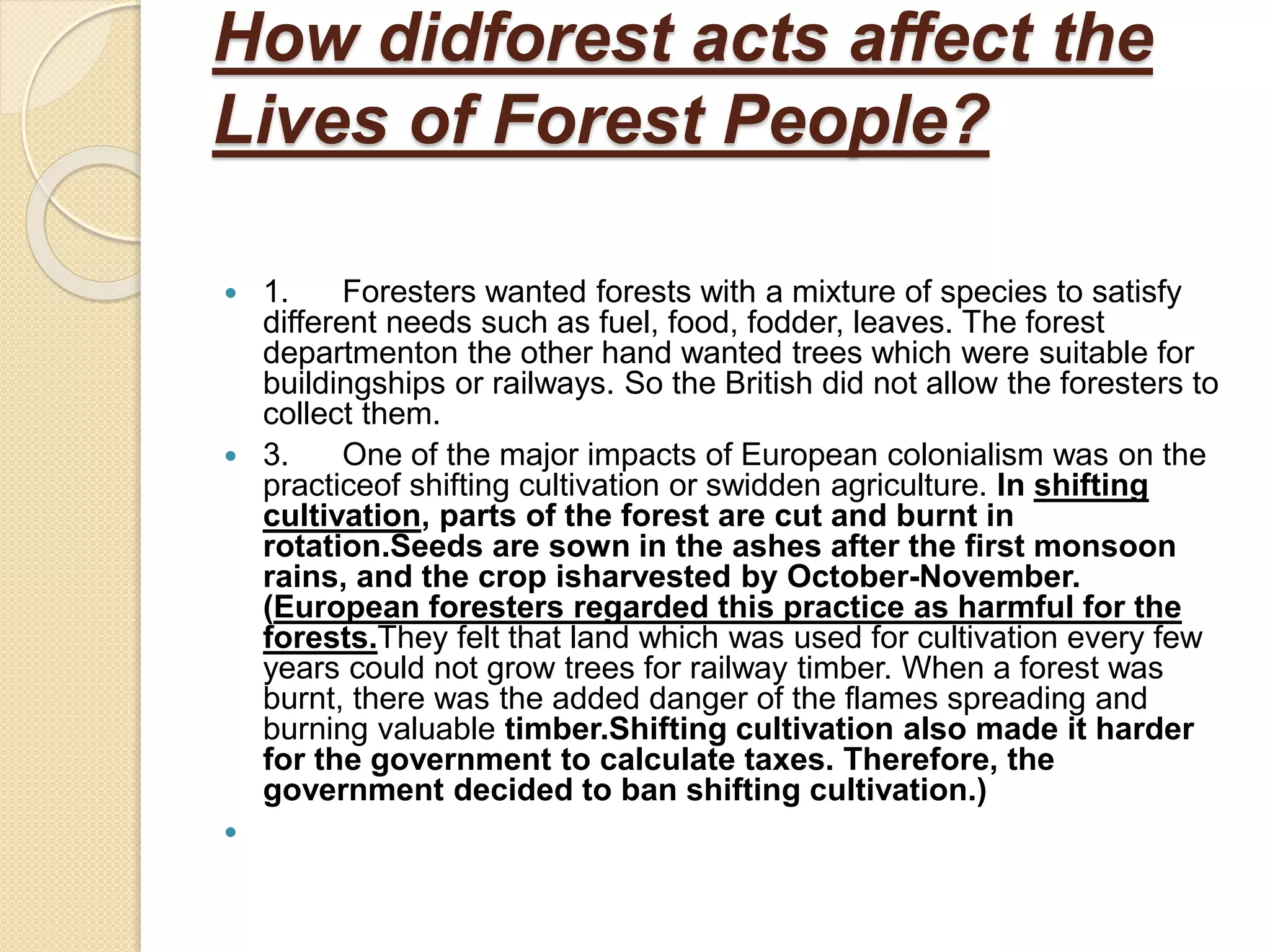The document discusses the impact of British colonialism on forests in India, detailing how the British encouraged deforestation for commercial crops, timber, and railway expansion, leading to significant loss of natural forests. It highlights the introduction of forest laws that restricted traditional practices of local communities, resulting in a conflict between colonial regulations and indigenous livelihoods. Furthermore, it explores the consequences of colonial forest policies, including the Bastar Rebellion and similar movements in Java, as people resisted government control over forest resources.













